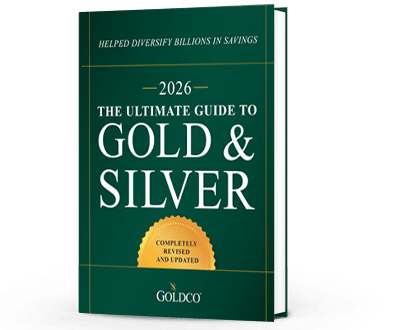
The idea of retirement is one that most Americans dream of. But the reality of actually planning for retirement can be a daunting one. From setting up retirement accounts to dealing with tax issues, planning for your post-work life can take up huge amounts of time and energy. Maybe that’s a reason so many Americans put off planning and saving for retirement.
But retirement investing doesn’t have to be that difficult. Most importantly, the earlier you start, the better. Building the underlying structure of your retirement investment plan when you enter the workforce and beginning to save and invest from an early age can go a long way towards helping you achieve your dream of retirement.
Retirement planning starts with determining how much money you’ll need to live on comfortably. Don’t worry if you don’t know that number exactly, because odds are your needs will change as you age. You can live on less when you’re single, but your expenses will definitely increase once you marry and start having children. But once they leave the nest and you’re able to retire, your expenses will drop back down again.
Once you have a handle on how much money you’ll need in retirement, then you can strategize about how to invest your money. Early on in your career you’ll probably favor stocks for their high growth rates. As you age you may start to move into bonds to lower the risk profile of your retirement investments. You may try to get involved in investing in real estate, either through purchasing rental properties or investing in real estate investment trusts. And during times of economic uncertainty you may decide to protect your retirement investments with gold.
Whatever retirement investing plan you choose, one of the keys is to maintain an adequately diversified portfolio. A mixture of stocks, bonds, mutual funds, gold IRA investing, etc. can go a long way towards keeping your assets safe and secure into retirement. While the precise mix of investments is a personal decision, that diversification will be key to maintaining your wealth.
Planning for Retirement
Maintaining adequate financial resources in retirement is really very simple: just make sure that your income always exceeds your expenses. But that simple task isn’t always that easy to accomplish.
You’ll have to estimate how long you’ll live, what kind of healthcare expenses you’ll expect to have to pay, and what kind of recurring expenses you can expect to pay. For the most part, you can expect to have lower expenses in retirement than during your working career. Your children will have moved out of the house, your mortgage will have been paid off, and you won’t be making as many major purchases like new cars, family vacations, etc.
Of course, some retirees may very well want to live it up for a while, traveling to places they weren’t able to get to when their kids were growing up. Or they may want to buy that Mercedes or Porsche they’ve always wanted but never had the time to drive. Remember, when it comes to retirement investing there are no hard and fast rules. Your savings and investment decisions will be driven by what you expect to spend in retirement.
The length of time you expect to spend in retirement is an important factor to consider too. If you come from a line of long-living people and retire at age 55, you may spend as much time in retirement as you did working. If you’re not prepared for that financially, you may find yourself having to pinch pennies once you reach your 90s.
Investors also need to take into account the effects of inflation on their retirement investments. With 2-3% annual inflation, retirement portfolios need to make returns above and beyond the inflation rate in order to keep you fully funded through retirement. If you’re on a fixed pension or some other sort of fixed income, inflation will gradually eat away at your income, destroying your purchasing power over the decades of retirement.
With all that in mind, let’s look at a few of the assets that you can invest in for retirement to help you reach your financial goals. We’ll skip stocks for now because you can find so much information about them elsewhere, and we’ll stick to looking at some less well-known investments such as immediate annuities, bonds, retirement income funds, real estate, and gold.
Investing in Immediate Annuities
Immediate annuities are contracts under which you give a lump sum of money to a company in exchange for guaranteed fixed amounts of monthly income. They’re not so much investments as they are a form of insurance. While they often last until you die, there are also immediate annuities that last for various fixed terms of time.
The advantage of immediate annuities is that they start paying you immediately. And because the payments are guaranteed until you die, you can’t outlive your retirement savings. Essentially the company is gambling that you will die before receiving your full benefits. If you live longer than they expect then you’re actually making out better than you would have without the annuity. But immediate annuities aren’t for everybody.
Immediate annuities are most often sought by those who are already retired. They may be afraid that they can’t manage their own retirement investing, that they won’t get good returns on their investments, or that they’ll outlive their savings. But plowing their money into immediate annuities means that they tie up their assets in annuities, so if they need money in a pinch they’re out of luck. And once you die your benefits end, meaning that you won’t have anything to will to your heirs.
If you struggle with how to invest for retirement, don’t think you can be disciplined in spending your money in retirement, or just want to supplement a pension or Social Security income, then you might take a look at immediate annuities. For most investors, however, there are better choices.
Investing in Bonds
Bonds are relatively popular investments, probably second only to stocks in their popularity. Bonds pay interest at regular intervals, making them popular investments for investors looking for steady investment income.
One of the more popular bond investment strategies is to create a bond ladder, staggering maturity dates of the bonds you invest in so that not all your investments are coming to maturity at once. That helps to provide a steady income stream and protect too against the damaging effects of any bond defaults.
Because bonds, especially those with high ratings, are considered safer investments than stocks, their returns are normally lower too. As with anything else in retirement investing, the more risk you take on, the more reward you can expect. Despite that, bonds play a useful role for investors looking to lower the risk of their investment portfolio, gain regular investment income, and diversify their retirement investments.
Investing in Retirement Income Funds
Retirement income funds are mutual funds that are designed to provide income to investors in retirement. They use a mix of stocks, bonds, and cash investments in order to provide investment returns to retirees.
Retirement income funds are popular with investors who don’t want to have to get into the nitty-gritty of investment analysis to figure out what they want to invest in. They may have targeted retirement dates, targeted annual payouts, or some other factor that makes them attractive to those looking for income in retirement.
While the goal is to provide some sort of guaranteed income, investors who invest in retirement income funds can access that money at any time. That makes them a lot more flexible an option for those who may need to pay some unexpected expenses.
Investing in Rental Real Estate
With the rise in real estate values over the past couple of decades, many people have decided to get rich by getting involved in real estate investing. But while many people who started flipping houses got burned in 2008, those who bought houses to rent didn’t fare quite as badly.
Renting real estate can be a great way to make money, however it comes with quite a few drawbacks. For one thing, the time commitment in dealing with tenants, dealing with property managers, and performing maintenance and upkeep can be a lot more work than most people want to deal with. Investors also need to understand that rental income can quickly be eaten away through taxes, fees, and other regular expenses.
There are also issues with vacancy, as properties won’t always be able to be rented 100% of the time. Vacant properties are a cash drain which investors need to be prepared for. While there have been many investors who have made good money investing in rental real estate, being a landlord isn’t for everyone. And if you’re looking for a relaxing retirement, the stress of owning rental properties may mean that real estate rental is not the best retirement investing choice for you.
Investing in Gold
Gold is another popular investment that has attracted significant amounts of investor interest recently. Its most popular uses in retirement investing are to protect investors against inflation and economic uncertainty. When investors fear that an economic downturn is around the corner, they flock to gold.
Gold has protected investors for centuries against inflation, currency debasement, and economic instability. It helps to provide important portfolio diversification, and keeps its value in good times as well as bad.
Investors today can even invest in gold through a gold IRA, a form of IRA that allows them to invest in physical gold coins and bars. That allows investors the ability to use pre-tax dollars to invest in gold, defer taxation on gains until distribution, and take distributions in gold or in cash. Even better, investors who choose a gold 401(k) rollover can roll over funds from existing 401(k) or similar retirement accounts into a gold IRA tax-free. That allows them to protect their existing retirement assets against a stock market downturn without having to worry about negative tax consequences.
Investors who invested in gold in 2008 saw the value of their gold holdings increase significantly in the aftermath of the financial crisis. Those who are making the move to gold today will likely see similar gains, avoiding the near certainty of guaranteed losses in stock markets.
No matter how you decide to invest your hard-earned savings, there’s a retirement investing strategy out there for you. Whether you decide on stocks, bonds, annuities, real estate, or gold IRA investing, you have the ability to control your retirement investments and ensure that you meet your retirement dreams. If you want to learn more about how to protect your retirement investments, contact the experts at Goldco today.





